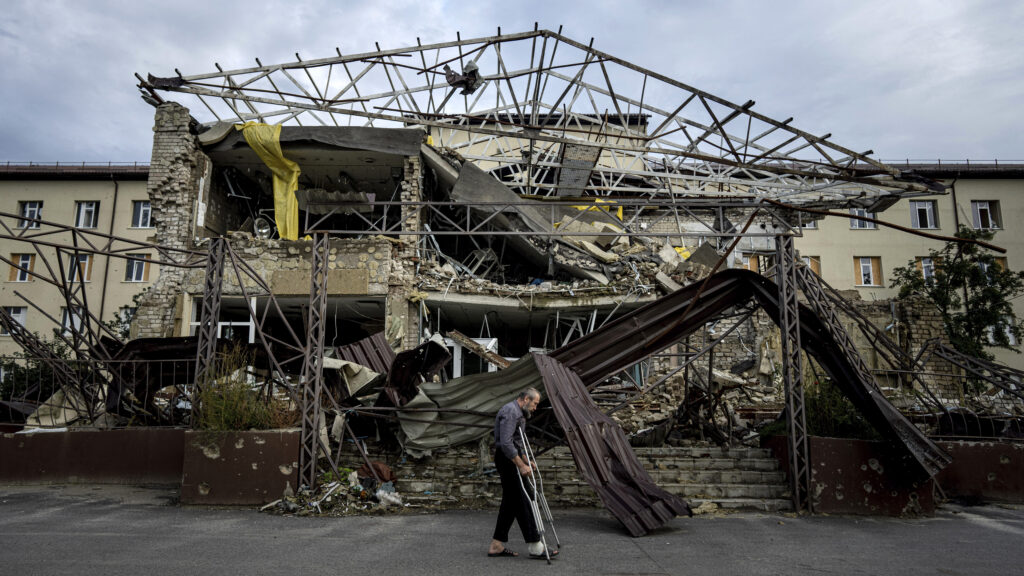In recent months, evidence suggests, the war in Ukraine and the ongoing conflict in Gaza have led to spikes of multidrug-resistant bacterial infections. This is to be expected; conflicts often create conditions that are perfect for drug resistance to emerge and spread, with the first evidence of this dating back as far as the 1940s.
What is particularly worrisome about this is that the number of conflicts across the globe is at an historical high, and on the rise. This suggests that, even with nearly 5 million deaths a year now associated with antimicrobial resistance (AMR), we may have drastically underestimated the true scale of this escalating global crisis — it may be spreading even faster than we realized.
advertisement
Until now, most of the focus on AMR has been on the inappropriate use of existing antibiotics and the dwindling global supply of new ones as pharmaceutical companies have steadily withdrawn from the market. These have certainly been the main drivers of drug resistance over time, but conflict is now also playing an increasingly significant role, because of its potential to drastically accelerate the emergence and spread of drug-resistant bugs. We now need to start factoring this into our science, policy, and thinking, particularly in the run up to the 2024 United Nations High-Level Meeting on AMR. If we fail to do that, we risk missing a very important piece of the puzzle.
As a medical doctor who has worked in conflict zones and humanitarian settings for Médecins Sans Frontières (MSF, or Doctors Without Borders), I have seen firsthand how war zones can fuel the risk of drug-resistant infections. Often, damage to critical infrastructure can limit people’s access to clean water and sanitation, making it more difficult to maintain basic hand hygiene, thereby increasing people’s exposure to pathogens. Similarly, disruption to health facilities and health services, such as vaccination, when combined with human displacement, can lead to outbreaks of infectious diseases while a lack of medical staff or resources can make them more difficult to treat.
The types of traumatic injuries that can be sustained during conflict and the types of battlefield surgery they require also play a role. Often they are carried out in conditions that are anything but sterile, making it much more difficult to prevent wounds from becoming contaminated. This, coupled with a lack of access to alternative drugs, can often force doctors to resort to the use of broad-spectrum antibiotics, which are normally kept as a last resort, to be used only when first-line antibiotics have failed.
advertisement
All these factors can conspire to encourage the emergence and spread of drug-resistant bacteria. In fact there has also been increasing suspicion about the role that heavy metals might play here. Metals, from lead, mercury, and copper to zinc, antimony, and barium, are increasingly common in weapons and munitions, with levels of toxicity that could potentially also put selective pressure on bacteria to develop resistance to drugs.
Drug resistance is already one of the world’s biggest killers, directly responsible for more deaths than HIV/AIDS and malaria combined, and it’s on the rise. In time, it could even reverse the 23-year increase in worldwide life expectancy that antibiotics have helped us achieve, as highly treatable infections once again become untreatable. To prevent this from happening, organizations like mine, the Global Antibiotic Research & Development Partnership (GARDP), are working to accelerate the development of and access to much-needed antibiotics that target priority pathogens — those multidrug-resistant bacteria that pose the greatest threat — to stay ahead of superbugs.
That, however, may become even more challenging if the speed at which bugs develop resistance is further accelerated because of continually increasing and prolonged conflicts across the globe. And once bacteria develop resistance to antibiotics, this ability can easily spread to other similar bacteria and to different strains and be transmitted beyond the conflict zone and between humans, for example through soldiers returning home after fighting overseas. This is precisely how Acinetobacter baumannii, one of the most leading pathogens responsible for hospital acquired infections, came to the U.S. following Desert Storm and the Iraqi conflict.
Infection prevention and control is difficult to achieve in a war zone, but it is also one of our best and most effective weapons in the global fight against AMR. So, in addition to underscoring the need for new antibiotics and better access to existing ones, we should not forget that historically, infectious diseases often claim more lives during wars than combat.
It should go without saying that it is in everyone’s best interest for all conflicts to be brought to a swift and peaceful resolution, and to make access to effective antibiotics a priority whenever this is not possible. But it’s worth saying anyway, because the longer conflicts persist the more they will affect not just the health and lives of those people caught in the conflict zones, but people all across the world and for decades to come.
Manica Balasegaram is the executive director of the Global Antibiotic Research & Development Partnership (GARDP).

